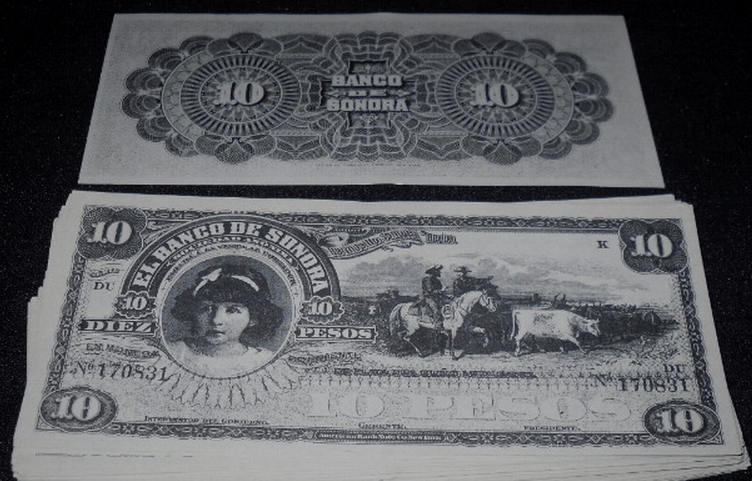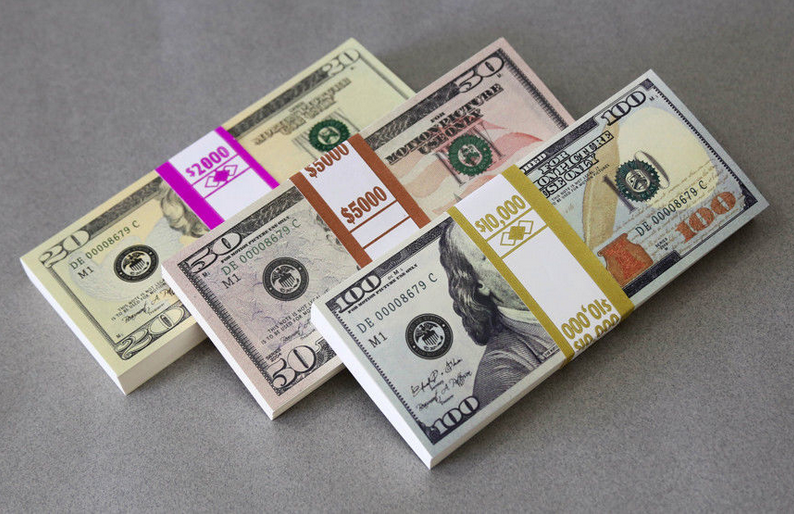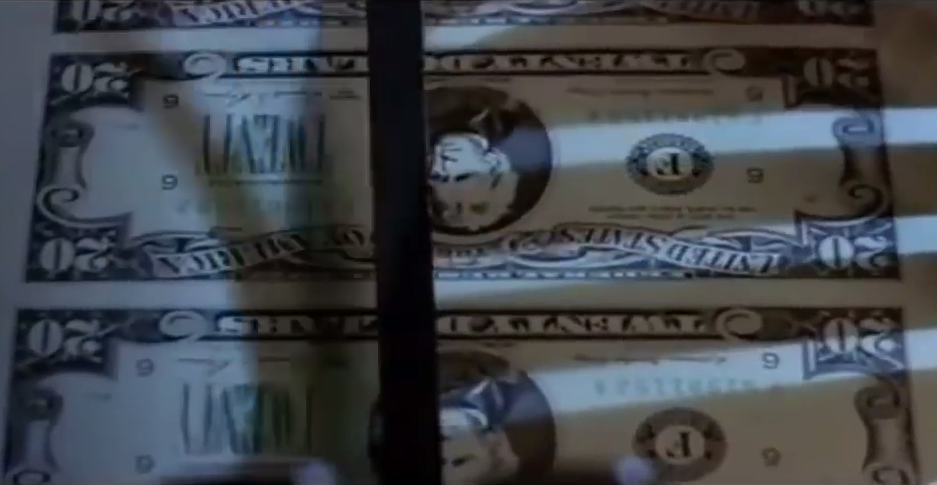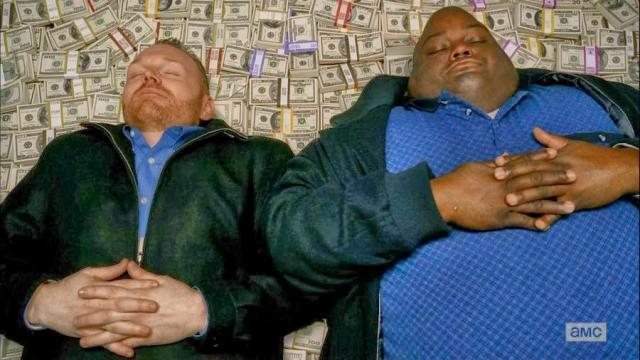In late 2000, the producers and crew for action flick Rush Hour 2 gathered at the now-defunct Desert Inn in Las Vegas and prepared to blow up a casino. The scene, which pitted policemen and Secret Service agents against a counterfeiter attempting to launder $US100 million in superdollars, was to culminate with hundreds of thousands of fake bills floating through the air.
After several days of filming, the sequence was a success. Then, something incredibly odd happened. The bills, which had been supplied by a major Hollywood prop house, were picked up by movie extras and passersby and were attempted to be passed off as legal tender in various stores along the strip. The authorities weren’t too thrilled. Secret Service agents glided in, swiftly detained somewhere north of $US100 million worth of prop money, then accused the prop maker — Independent Studio Services (ISS) — of counterfeiting, and ordered a cease and desist on all of their faux cash.
For ISS (the company who produced the money), the premise of Rush Hour 2 had become a reality — and they were penned as the bad guy. Sadly, their story is indicative of a constant dilemma faced by prop suppliers in Hollywood: the necessity to skirt the line between strict counterfeiting laws and producers’ demands for incredibly realistic money.
This post was originally published on Priceonomics, the authors of a new book called Everything Is Bullshit.
Money in the Movies: A Brief History

A counterfeit Mexican bill used in 1940s-era cinema
Today, “movie money” is ubiquitous and plays a multitude of roles in TV shows and films. It can be seen clutched in the hands of heisters and gangsters, tucked covertly into steel suitcases, and splayed across poker tables in smoky rooms. But as far back as the inception of film (anywhere from 1878 to 1895, depending on one’s definition of the medium), money has been represented on the big screen.
Fred Reed, author of Show Me the Money, a book compiling the history of currency in the movies (both real and fake), chronicles how the use of real money gradually transitioned into the use of fake money. Legal tender made its big-screen debut in Thomas Edison’s 1895 kinetoscope film of a cock fight, in which two men wager ferociously; a few years later, in 1903’s The Great Train Robbery, real money was prominently featured during a stick-up scene.
But just as film began to flourish in the early 1900s, counterfeiting crimes rose; as a precaution, Federal laws were enacted that barred the use of real currency in full-scale photography. Studios found a replacement in 1920: when the Mexican Revolution ended, vast quantities of Mexican currency, rendered worthless by the war, were acquired by Hollywood producers and used in lieu of U.S. tender. When the supply of these notes diminished a decade later, studios began replicating other Mexican currencies. By the 1960s, this crude prop money was in widespread use.
Gradually, prop houses in Hollywood began sensing producers’ demands for more believable U.S. currency, and a new era of movie money was born. Between 1970 to 2000, nearly 270 types and 2,000 sub-varieties of movie money were produced for Hollywood’s use. To win market share, prop masters increasingly competed in creating the most realistic fake cash available — but it came at a very real cost.
Legal Counterfeiters

Modern-day movie prop bills
Gregg Bilson Jr. is the CEO of Independent Studio Services, a Sunland, California-based prop company his father started out of an abandoned Lockheed hangar nearly 40 years ago. Today, his company houses over one million props in seven locations around the United States and Europe. They have provided props for nearly every blockbuster movie and hit TV show in the last few decades, from 90210 to Indiana Jones. They also fatefully supplied the prop money for Rush Hour 2, a job that still haunts them 13 years later.
When Priceonomics called Bilson to discuss his business, he painstakingly recalled the repercussions of the 2000 incident. The Secret Service came knocking on his door — first with a cease and desist ordering production of the fake currency be cut off, then again to confiscate all of his digital files and currency inventory as it returned from movie sets around the world. In all, they eradicated nearly $US200 million in fake studio bills. At roughly an $US8 real money cost per $US10,000 stack of fake bills, the loss was steep for the company.
As it turns out, the Feds have strict laws about the production of fake currency. According to the Counterfeit Detection Act of 1992, a reproduced bill must be: a.) either less than 75% or more than 150% the size of a real bill, b.) one-sided, and c.) made with only one colour (so as to discourage the reproduction of identifying factors). Over the phone, Bilson elaborates that his bills at the time fit most of the criteria:
“The bills looked pretty god awful…we had 28 factors that were different — they said “In Dog We Trust,” for instance — but the Secret Service is very clear on their definition of counterfeiting. Honestly, if you followed their instructions, you may as well use Monopoly money. Feature films demand a certain bar of quality, so everyone is asked to break law in a sense by making prop money.”
The Secret Service begged to differ. “They thought they’d followed the rules,” said Chuck Ortman, a special agent in Los Angeles, following theRush Hour 2 incident. “In reality, the product they were producing was just too close to genuine…son of a gun, if it’s green and it says ’20’ on it, somebody will take it.”

A real $US100 bill (top) vs. Bilson’s $US100 bill (bottom)
Bilson was eventually forced to destroy his entire inventory of currency — “somewhere in the billions” — at considerable loss for ISS, which is one of only two firms in Los Angeles that produces fake currency for the movies. The other, Earl Hays Press, came under fire of its own in 2000. When a hard-core metal band rained its audience with the company’s fake bills at a music video shoot, unwitting participants attempted to spend the money; the stunt resulted in the confiscation of Hays’ entire inventory. Subsequently, some of the bills ended up at Ellis Props and Graphics (one of Hollywood’s oldest outfits), and the Secret Service ordered that they cease operation, costing them tens of thousands of dollars.
To re-enter the fake currency market, Bilson had to drastically change his product. Today, he manufactures stacks of blank paper, then tops them with one real hundred-dollar bill — a practice that is permitted legally. “There’s a wive’s tale out there that you can’t use real money on camera,” he says, referring to laws from the early 20th century, “but that’s no longer true.” His stacks are glued together so they can’t be separated and “used to buy Slurpees at 7-11” by movie assistants and interns.
Even with its altered appearance, ISS’s movie money has appeared in “tens of thousands of commercials, films, and TV shows” — 24, CSI, The Dark Knight, Dexter, and The Hangover included. In a now-iconic Breaking Bad scene, characters sprawl out on massive stacks of the company’s bills.

Bilson and other prop builders’ ultimate goal — “to blur the line between what’s legitimate and what’s not” — creates problems for them beyond movie money. “Police stuff, for instance, is something you’ve got to be careful with,” says Bilson. “If it’s too real, you’ll have issues.” For this reason, prop houses make themselves accessible only to “bona fide motion picture entities,” which must have $US1 million insurance policies on file to merely rent out something as simple as a ten-dollar police badge.
While Bilson understands the intentions of the Secret Service, he also feels the efforts are misappropriated. Confiscations have drummed up concerns about on-screen realism; if prop houses continue to be heavily monitored, Bilson fears Hollywood may be forced to seek out less-trackable, more illegal options. “If you make all of this illegal for anyone in any capacity to possess, then what you have is a black market with no controls,” he says. “When fake money is within a prop house’s jurisdiction, we have level of control. If something’s missing, we can alert authorities.”

Fake money from “To Live and Die in L.A.,” a 1985 film about a counterfeiter
So why not avoid all of this by using stacks of real money? According to Bilson, that would be a major logistical issue. “If you’re shooting a scene with $US100,000 in cash, you don’t want to have $US100,000 of actual money on set,” he reasons. “That’s a liability.” While a small number of films do employ real money, it’s usually for special reasons.
Producers for 1978’s The Brinks Job opted to use real cash for a scene with extreme close-ups of huge piles of money; it was loaned from a bank, guards hawked over it for the duration of the scene, and it was collected, counted, and returned immediately following the shoot. There is also a small market for “period money.” Pam Elyea of History for Hire, a family-run prop business in Sun City, stays out of the phony lucre business, instead renting out small amounts of real money for historical films. For instance, her business was recently commissioned by the producers of Betsy Smith, a movie set in the 1920s, to provide bills from that era. Elyea adds that it’s “hard for production companies to liquidate assets after the film or television series,” so they choose to rent cash out instead of purchasing it at face value.
If Gregg Bilson truly intended to be a counterfeiter, he jokes that he could produce “much more exceptional money.” Instead, he chooses to “do good rather than evil.”
Like other prop masters, Bilson isn’t trying to “dupe the public” — he’s just trying to help make movies a more life-like experience. Despite his efforts, it seems the stigmas around counterfeiting will always create problems for him in the industry. “We try to make realistic props — that’s it,” he says, “sometimes we cross the line of realism, but that’s our job.”
This post has been republished with permission from writer Zachary Crockett. For more, you can follow Zachary on Twitter here or Google Plus here.
